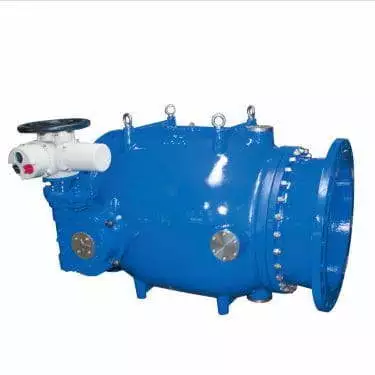Regulador de caudal tipo pistón, DN400, PN40, WCB, CF8, RF
Explore nuestro fabricante de reguladores de flujo de pistón que ofrece una amplia gama de opciones: DN400, PN40, 16 pulgadas, clase 300 LB, fabricado con materiales premium ASTM A216 WCB y ASTM A351 CF8. Con una brida RF y una estructura versátil de orificios múltiples, disponible en tamaños que van desde DN150 a DN1000.
Categorías
- Válvula de control
Etiquetas
Detalles
Descripción de la válvula:
Regulador de caudal tipo pistón, CON BRIDA
Cuerpo: ASTM A351 CF8, ASTM A216 WCB
Tamaño nominal: DN400.
Clase nominal: PN40.
Conexión final: brida RF.
Gama de productos:
Material del cuerpo: ASTM A216 WCB, ASTM A351 CF8.
Diámetro normal: DN150 - DN1000
Conexión final: Bridada.
Parámetros técnicos y características
Piston-type flow regulator
This Piston type flow regulator is a new type of control valve, which can adjust or control the flow without any operating restrictions. With a unique design, it can eliminate hydraulic energy without cavitation and vibration problems of general control valves. The reason why this valve can eliminate energy is that it uses the structure of multiple orifices. Water is ejected from each orifice and collides with each other. This design will make all the sprayed water columns impact each other on the valve center line, and the mutual impact of this water column will completely eliminate the velocity energy. In order to make all the spouted water columns impact each other intensively, the pressure or velocity head at each point must be kept consistent in front of each orifice. A special guide device is used to move horizontally along the sleeve tube to streamline the medium in the valve chamber, so as to keep the pressure at each point consistent. The reason why this valve can reduce the vibration is that it adopts advanced design technology to reduce the speed and head loss before the nozzle. At the same time, in order to avoid damage to the parts caused by cavitation, this cavitation phenomenon is concentrated in the center of the sleeve and surrounded by water. At this time, the bubbles in the water will be very unstable and break in the water, but will not break on the valve wall so as to eliminate noise, vibration and avoid damage to the valve.
Regulador de caudal tipo pistón, CON BRIDA
Cuerpo: ASTM A351 CF8, ASTM A216 WCB
Tamaño nominal: DN400.
Clase nominal: PN40.
Conexión final: brida RF.
Gama de productos:
Material del cuerpo: ASTM A216 WCB, ASTM A351 CF8.
Diámetro normal: DN150 - DN1000
Conexión final: Bridada.
Parámetros técnicos y características
| Product | Piston-type flow regulator |
| Nominal diameter | DN150 - DN1000. |
| Connection end | Flange. |
| Application | Water. |
Piston-type flow regulator
This Piston type flow regulator is a new type of control valve, which can adjust or control the flow without any operating restrictions. With a unique design, it can eliminate hydraulic energy without cavitation and vibration problems of general control valves. The reason why this valve can eliminate energy is that it uses the structure of multiple orifices. Water is ejected from each orifice and collides with each other. This design will make all the sprayed water columns impact each other on the valve center line, and the mutual impact of this water column will completely eliminate the velocity energy. In order to make all the spouted water columns impact each other intensively, the pressure or velocity head at each point must be kept consistent in front of each orifice. A special guide device is used to move horizontally along the sleeve tube to streamline the medium in the valve chamber, so as to keep the pressure at each point consistent. The reason why this valve can reduce the vibration is that it adopts advanced design technology to reduce the speed and head loss before the nozzle. At the same time, in order to avoid damage to the parts caused by cavitation, this cavitation phenomenon is concentrated in the center of the sleeve and surrounded by water. At this time, the bubbles in the water will be very unstable and break in the water, but will not break on the valve wall so as to eliminate noise, vibration and avoid damage to the valve.
Siguiente: Regulador de flujo de pistón de hierro dúctil fundido, CJ/T219, DN1600, PN10
Anterior: Válvula de control de bomba de agua tipo diafragma, DN200, PN16, CF8
